Abstract
Ambient outdoor concentrations and size distributions of airborne microbial particles were measured approximately weekly for 2 years in a Washington, D.C., suburban area. The study objective was to characterize microbial air quality in the vicinity of a proposed sewage sludge composting facility. During the study, 379 samples were taken at 17 stations, using Andersen microbial samplers. Concentration ranges (in viable particles per cubic meter) were as follows: airborne mesophilic fungi, 0 to 7,220 with a geometric mean of 273; thermophilic fungi, 0 to 193 with a median of 2.1; Aspergillus fumigatus, 0 to 71 with a median of 1.0; aerobic bacteria, 4.2 to 1,640 with a geometric mean of 79; and fecal streptococci, 0 to 5.7 with a median of 0. No fecal coliforms were recovered. The potentially respirable fraction (less than 8 microns) averaged 34% for total bacteria, 56% for mesophilic fungi, 91% for thermophilic fungi, and 95% for A. fumigatus. The specific sampling location was not a major factor affecting microbial particle concentrations or size distributions. Conversely, the time of year was an important determinant of viable particle concentrations for all groups of microorganisms studied. The highest concentrations were observed in summer and fall, with significantly lower levels detected in winter. In general, the microbial data did not correlate with other variables, including weather conditions, measured in this study.
Full text
PDF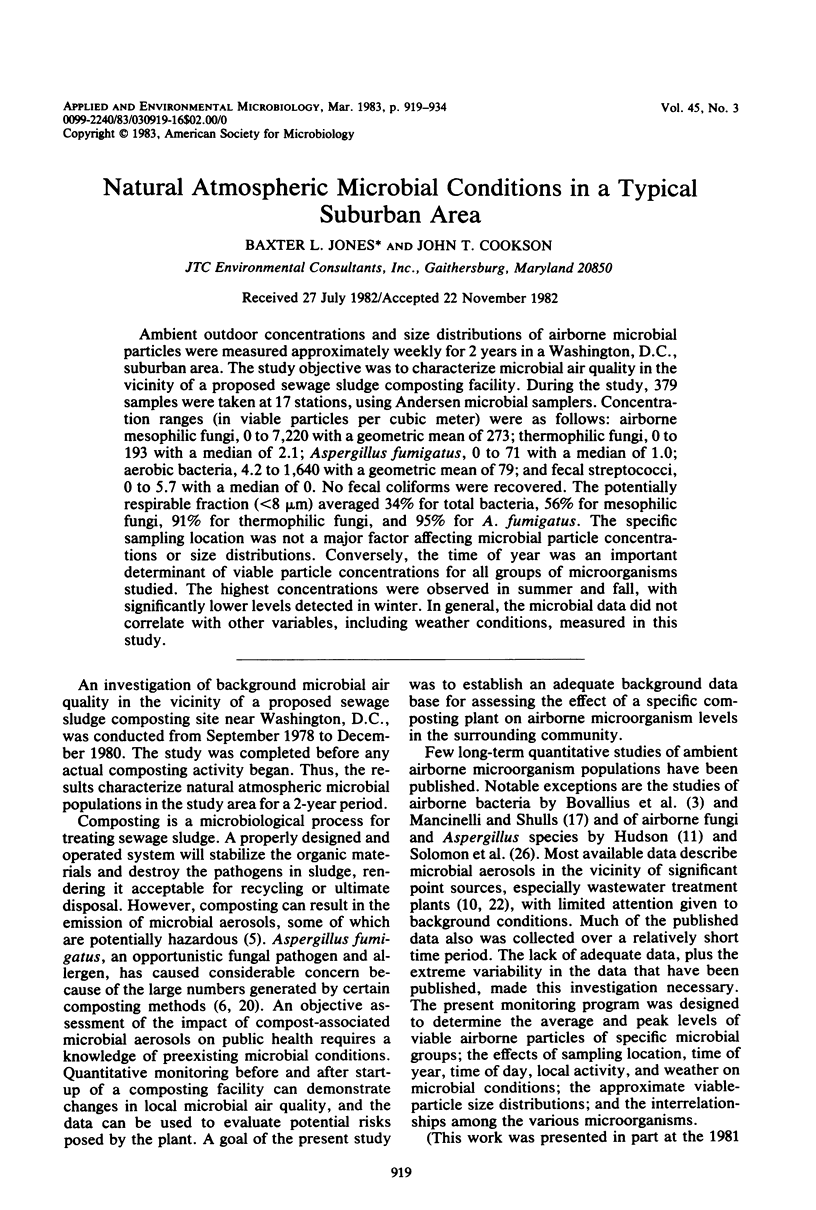
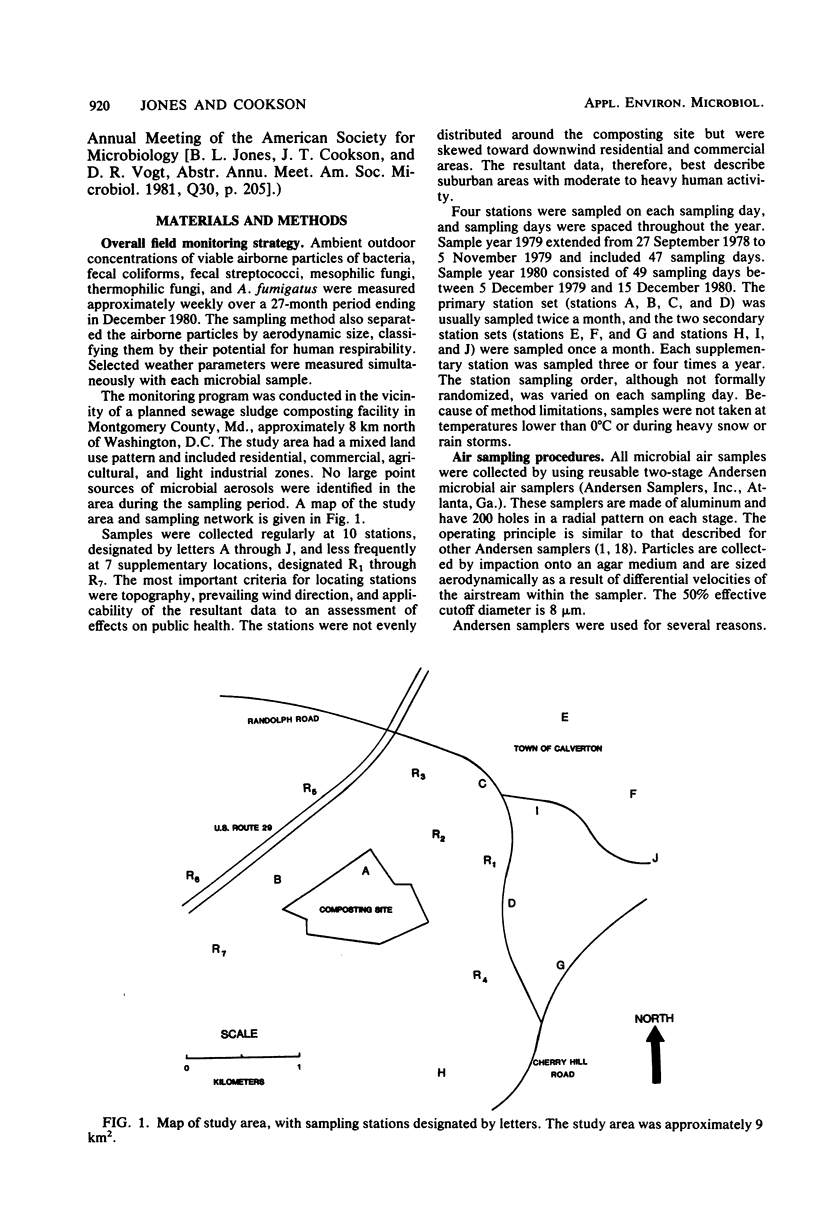
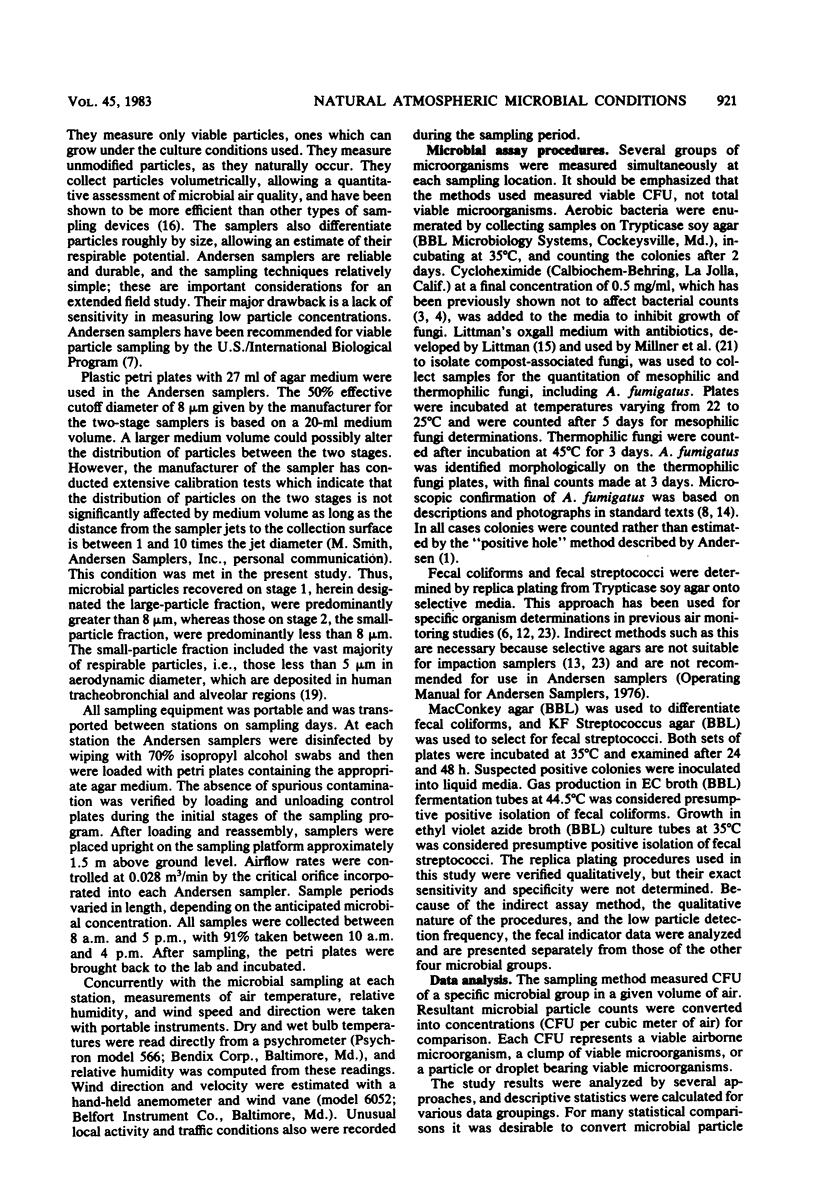
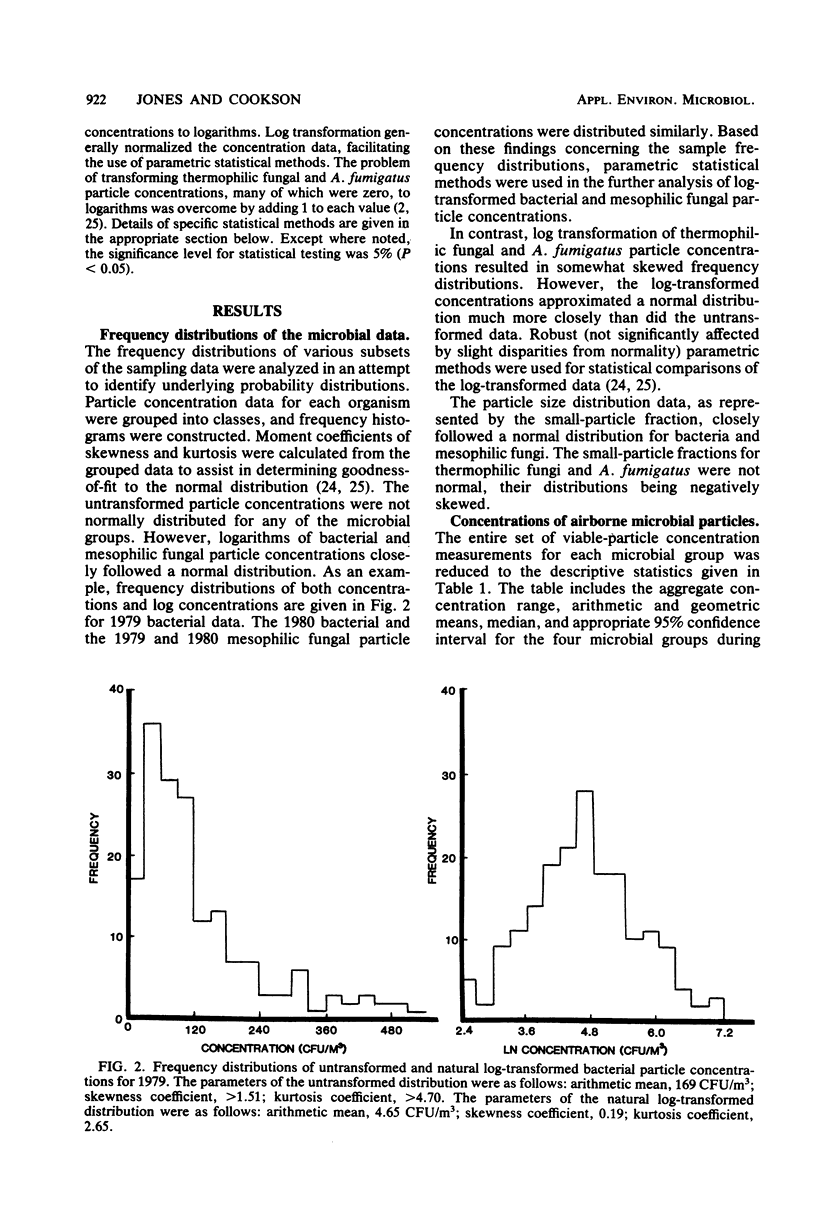
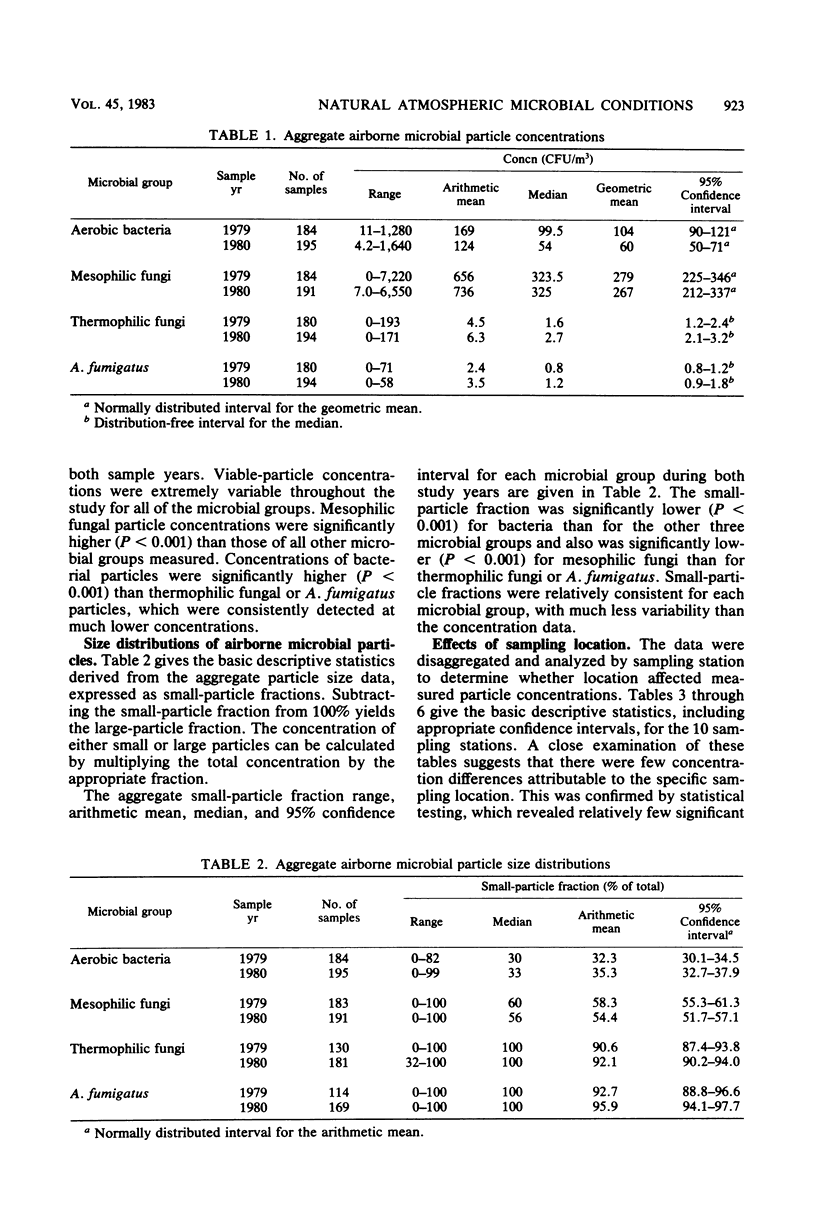
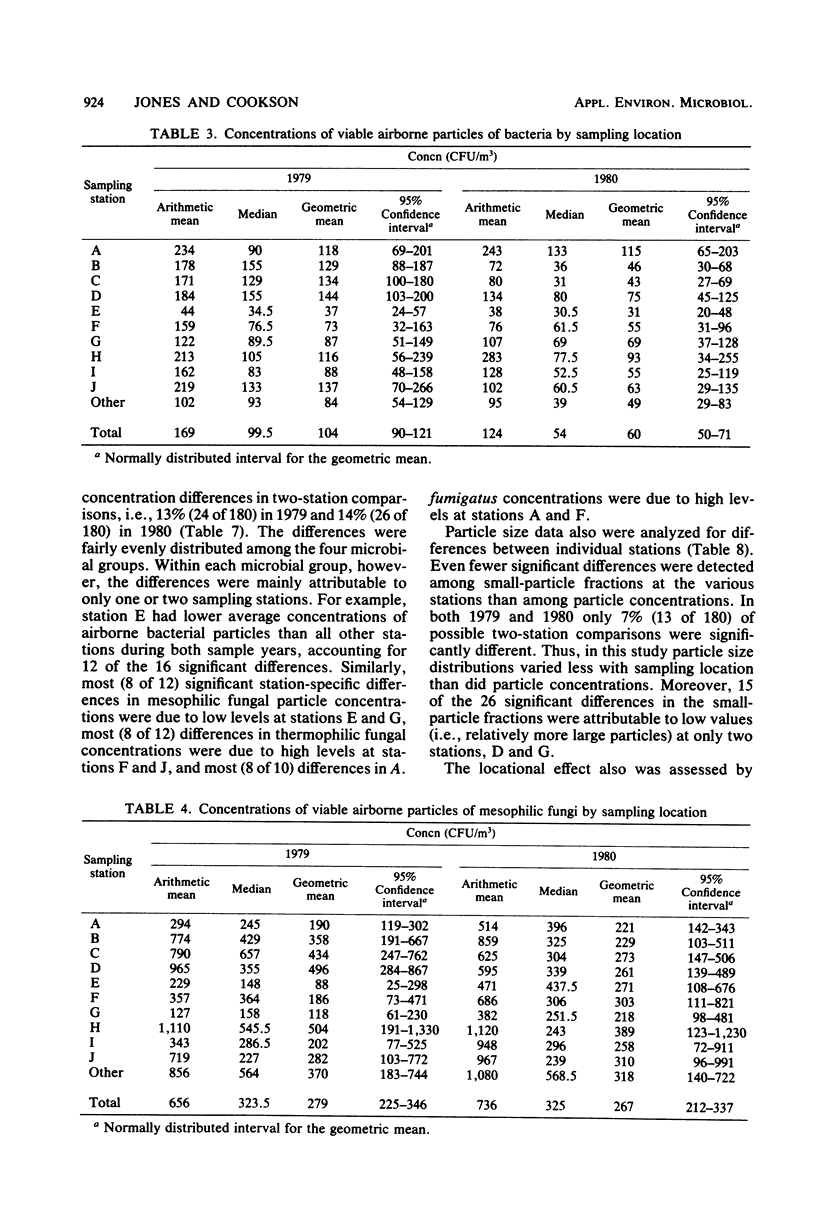
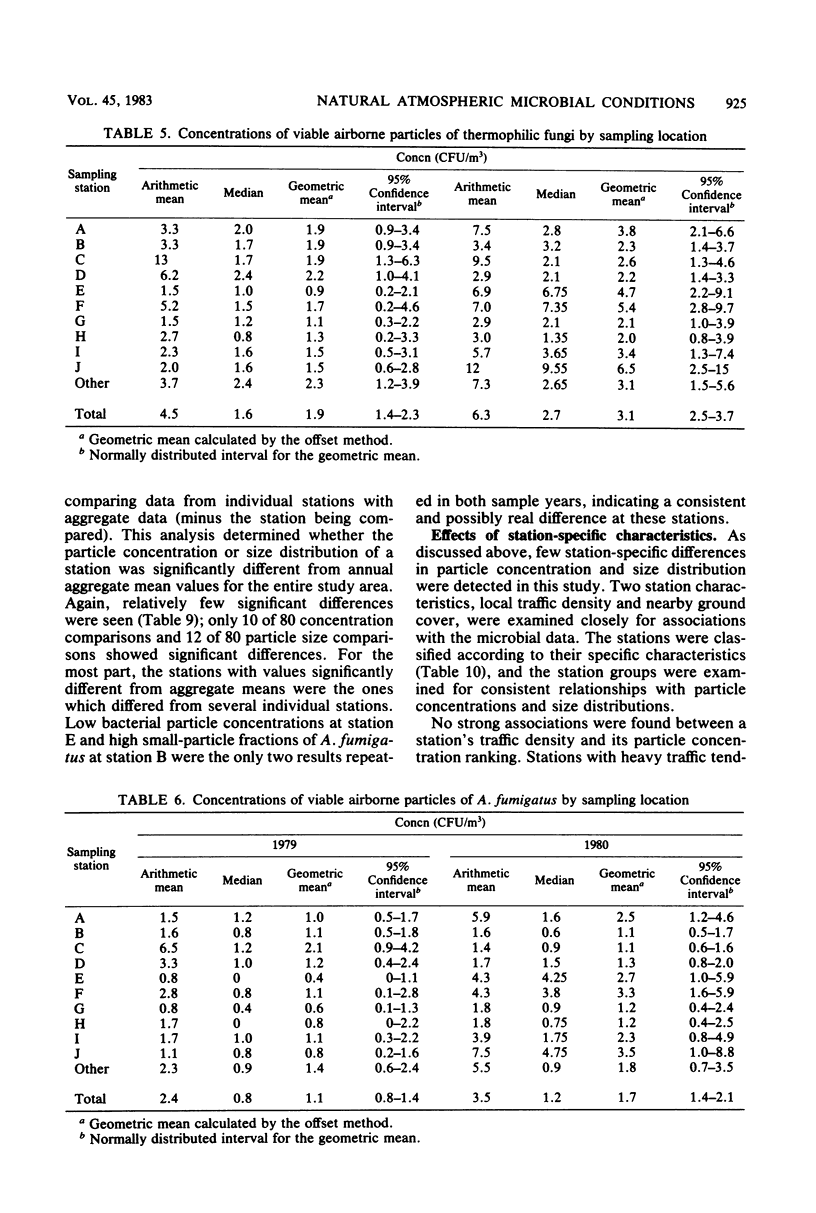
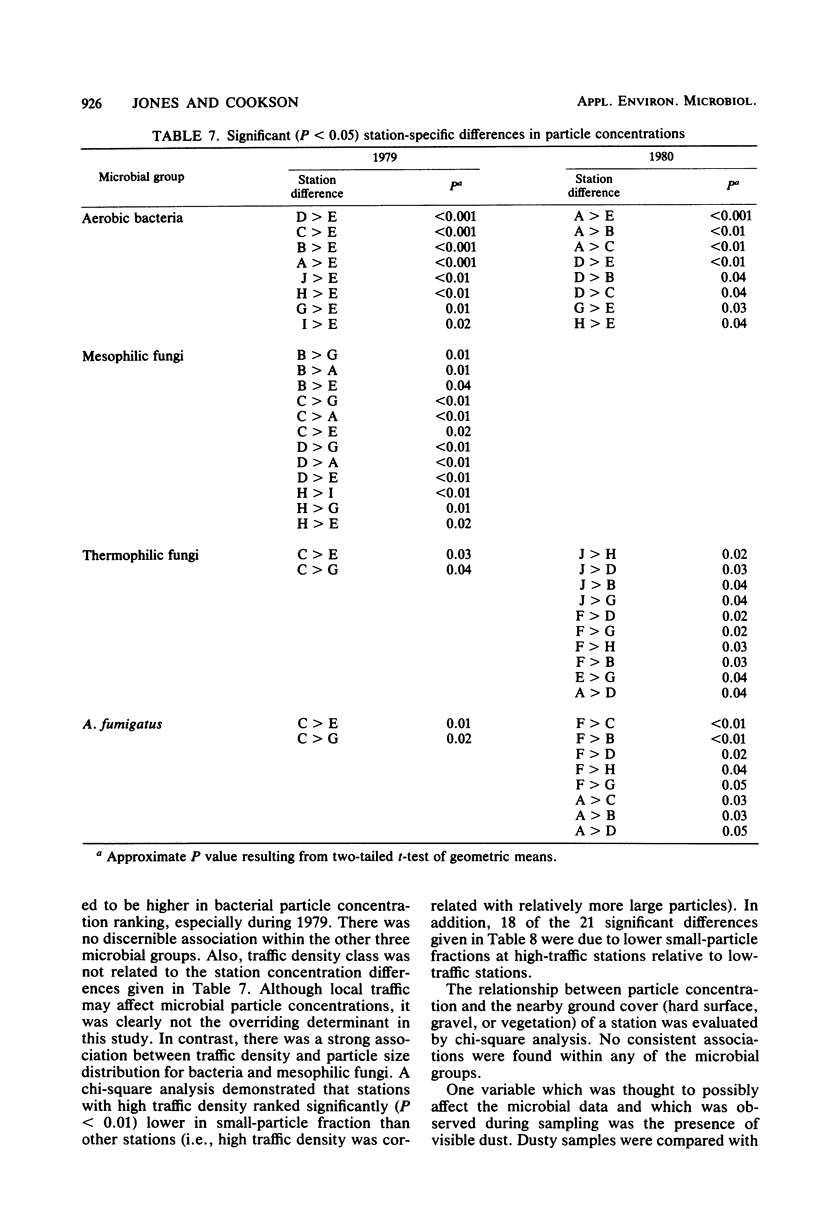
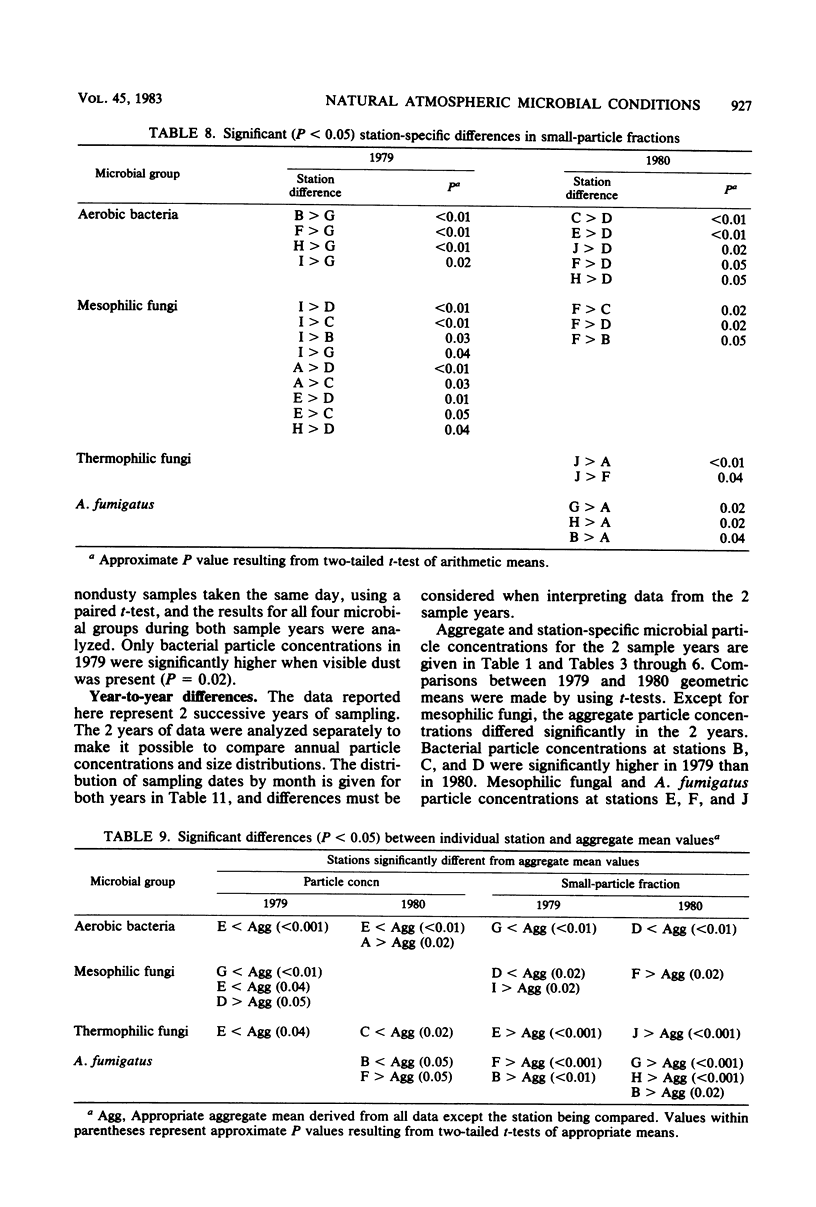
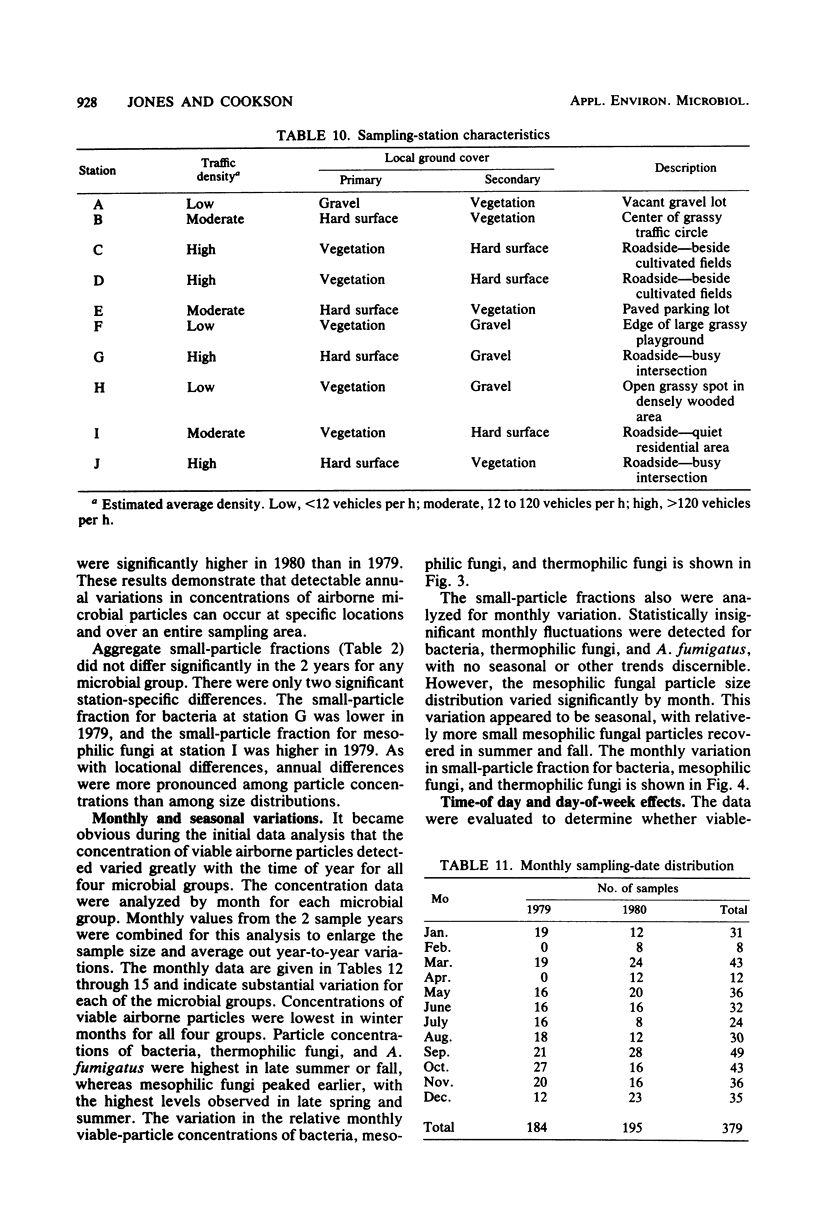
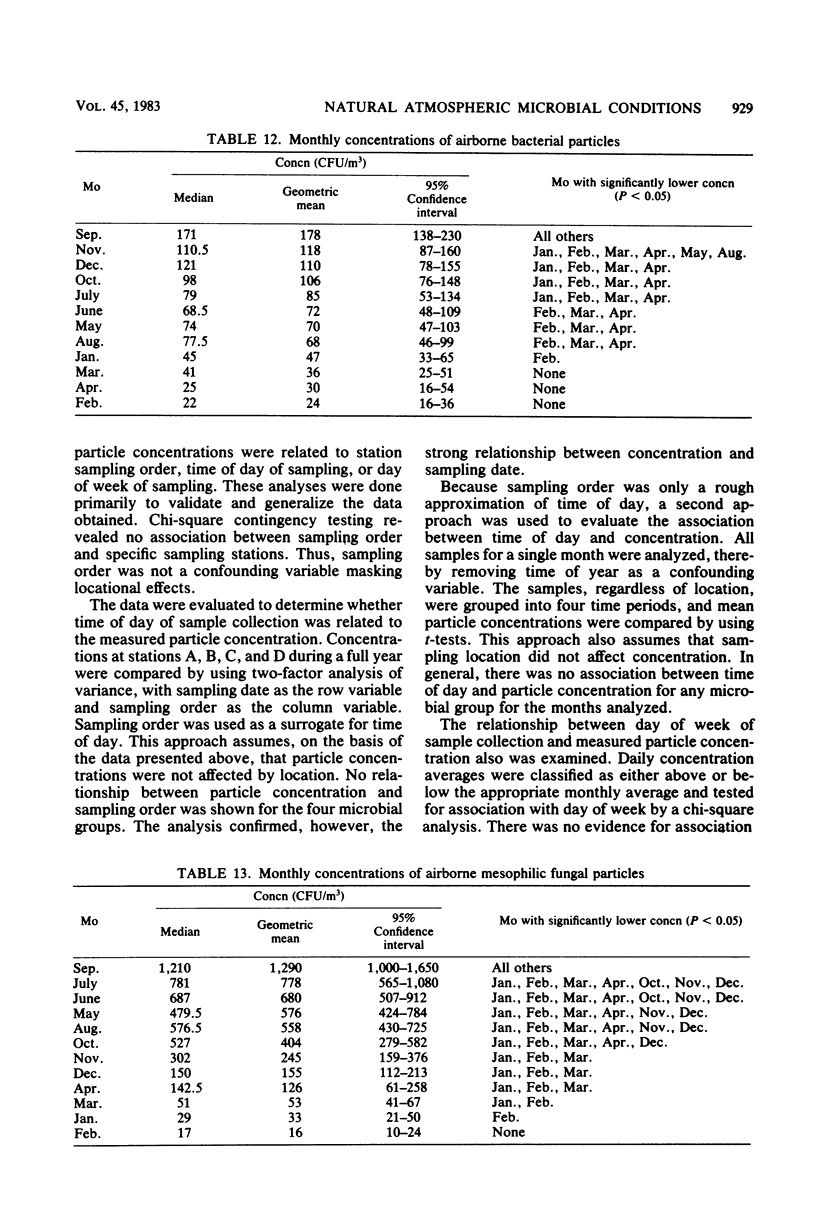
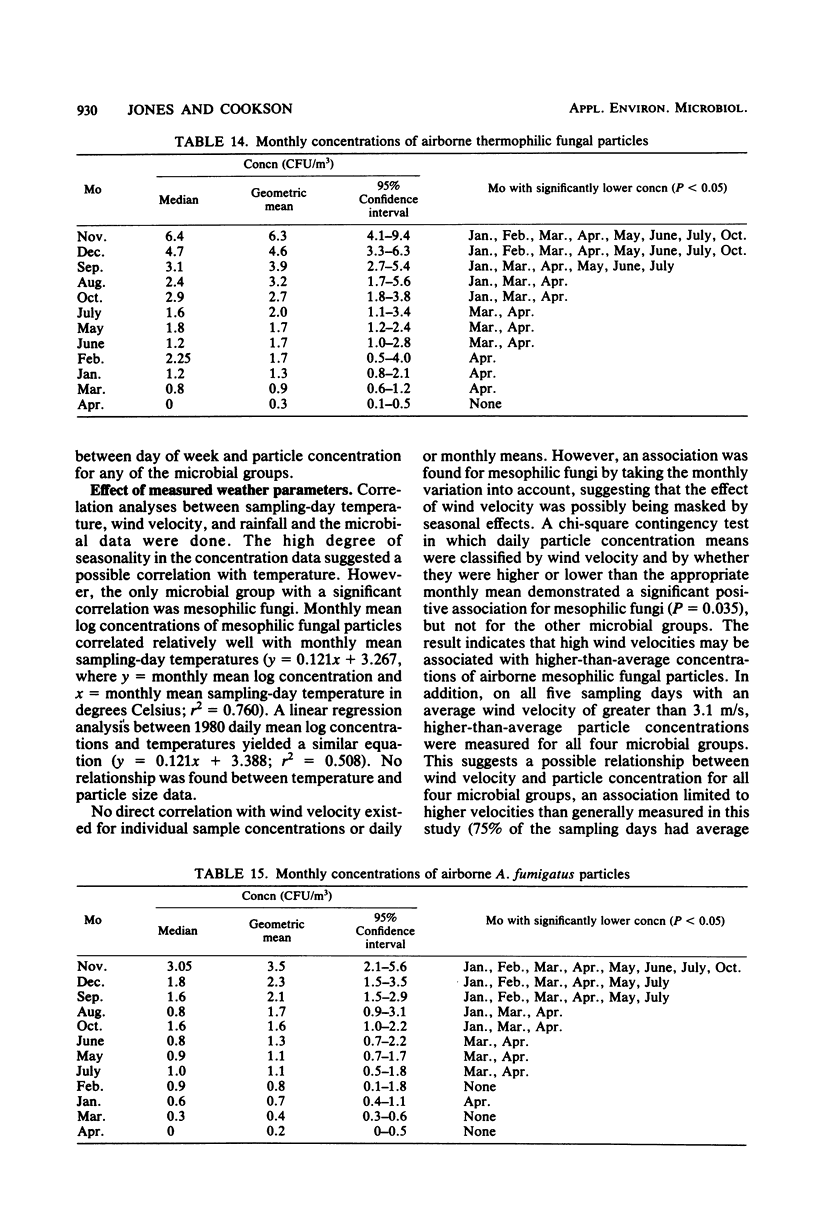
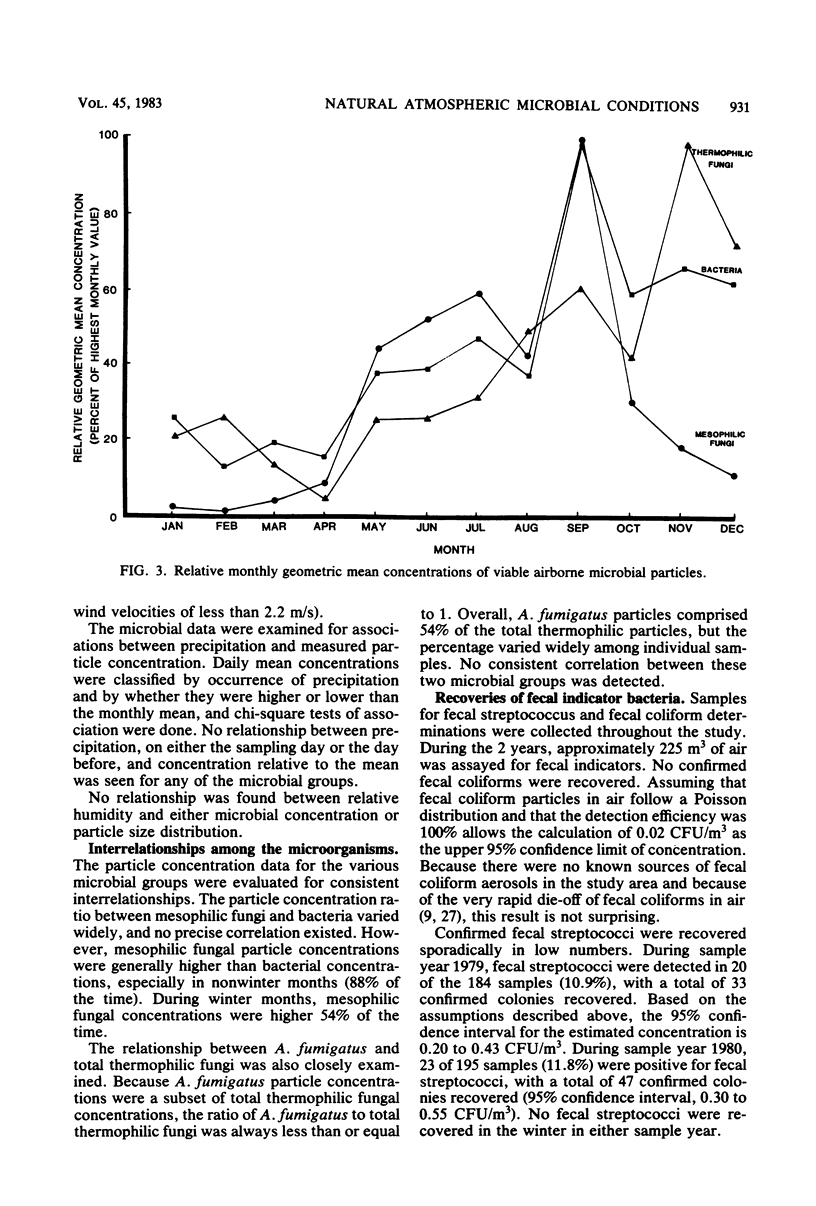

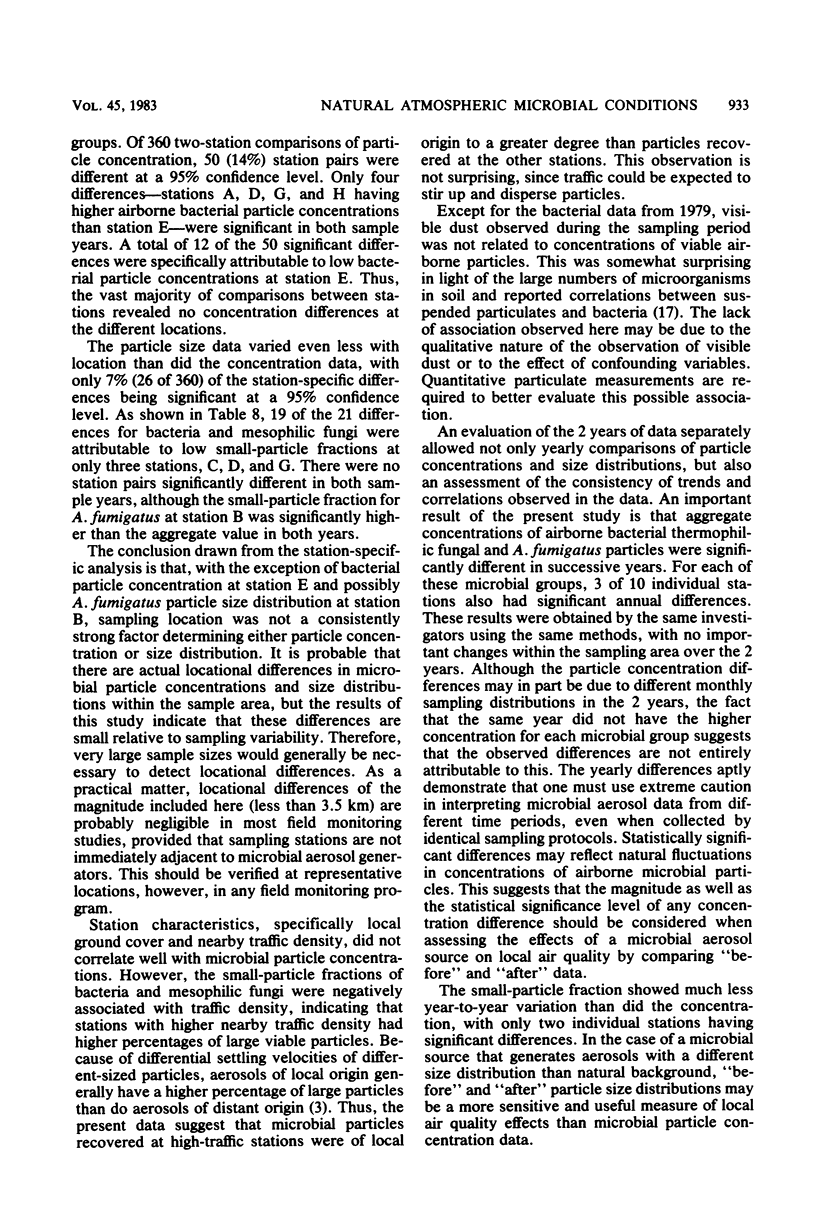
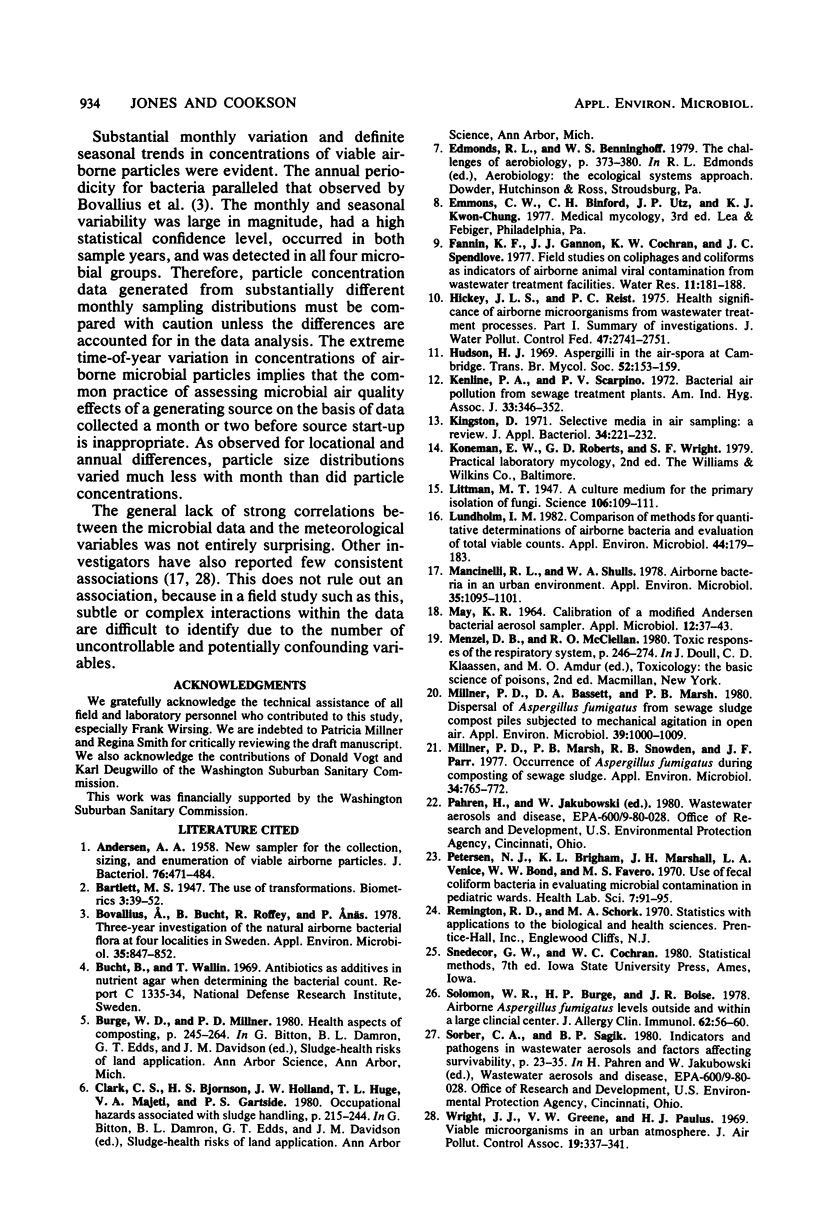
Selected References
These references are in PubMed. This may not be the complete list of references from this article.
- ANDERSEN A. A. New sampler for the collection, sizing, and enumeration of viable airborne particles. J Bacteriol. 1958 Nov;76(5):471–484. doi: 10.1128/jb.76.5.471-484.1958. [DOI] [PMC free article] [PubMed] [Google Scholar]
- Bovallius A., Bucht B., Roffey R., Anäs P. Three-year investigation of the natural airborne bacterial flora at four localities in sweden. Appl Environ Microbiol. 1978 May;35(5):847–852. doi: 10.1128/aem.35.5.847-852.1978. [DOI] [PMC free article] [PubMed] [Google Scholar]
- Hickey J. L., Reist P. C. Health significance of airborne microorganisms from wastewater treatment processes. Part I: Summary of investigations. J Water Pollut Control Fed. 1975 Dec;47(12):2741–2757. [PubMed] [Google Scholar]
- Kenline P. A., Scarpino P. V. Bacterial air pollution from sewage treatment plants. Am Ind Hyg Assoc J. 1972 May;33(5):346–352. doi: 10.1080/0002889728506659. [DOI] [PubMed] [Google Scholar]
- Kingston D. Selective media in air sampling: a review. J Appl Bacteriol. 1971 Mar;34(1):221–232. doi: 10.1111/j.1365-2672.1971.tb02280.x. [DOI] [PubMed] [Google Scholar]
- Littman M. L. A Culture Medium for the Primary Isolation of Fungi. Science. 1947 Aug 1;106(2744):109–111. doi: 10.1126/science.106.2744.109-a. [DOI] [PubMed] [Google Scholar]
- Lundholm I. M. Comparison of methods for quantitative determinations of airborne bacteria and evaluation of total viable counts. Appl Environ Microbiol. 1982 Jul;44(1):179–183. doi: 10.1128/aem.44.1.179-183.1982. [DOI] [PMC free article] [PubMed] [Google Scholar]
- MAY K. R. CALIBRATION OF A MODIFIED ANDERSEN BACTERIAL AEROSOL SAMPLER. Appl Microbiol. 1964 Jan;12:37–43. doi: 10.1128/am.12.1.37-43.1964. [DOI] [PMC free article] [PubMed] [Google Scholar]
- Mancinelli R. L., Shulls W. A. Airborne bacteria in an urban environment. Appl Environ Microbiol. 1978 Jun;35(6):1095–1101. doi: 10.1128/aem.35.6.1095-1101.1978. [DOI] [PMC free article] [PubMed] [Google Scholar]
- Millner P. D., Bassett D. A., Marsh P. B. Dispersal of Aspergillus fumigatus from Sewage Sludge Compost Piles Subjected to Mechanical Agitation in Open Air. Appl Environ Microbiol. 1980 May;39(5):1000–1009. doi: 10.1128/aem.39.5.1000-1009.1980. [DOI] [PMC free article] [PubMed] [Google Scholar]
- Millner P. D., Marsh P. B., Snowden R. B., Parr J. F. Occurrence of Aspergillus fumigatus during composting of sewage sludge. Appl Environ Microbiol. 1977 Dec;34(6):765–772. doi: 10.1128/aem.34.6.765-772.1977. [DOI] [PMC free article] [PubMed] [Google Scholar]
- Petersen N. J., Brigham K. L., Marshall J. H., Venice L. A., Bond W. W., Favero M. S. Use of fecal coliform bacteria in evaluating microbial contamination in pediatric wards. Health Lab Sci. 1970 Apr;7(2):91–96. [PubMed] [Google Scholar]
- Solomon W. R., Burge H. P., Boise J. R. Airborne Aspergillus fumigatus levels outside and within a large clinical center. J Allergy Clin Immunol. 1978 Jul;62(1):56–60. doi: 10.1016/0091-6749(78)90073-8. [DOI] [PubMed] [Google Scholar]
- Wright T. J., Greene V. W., Paulus H. J. Viable microorganisms in an urban atmosphere. J Air Pollut Control Assoc. 1969 May;19(5):337–341. doi: 10.1080/00022470.1969.10466496. [DOI] [PubMed] [Google Scholar]


